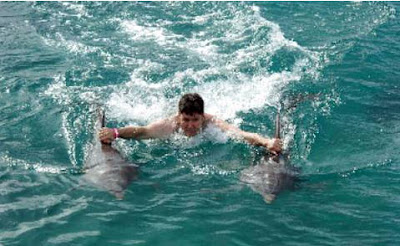Diving suit from The Bourne Identity (London Film Museum)
In this year's Paramount tournament, I was surprised to find myself as the bottom player in my 6-person section, the top section of 3. Carey Theil is top dog at 2194, and I am 1804 -- rather more of a spread than I am used to, for this tournament. The distribution of player ratings has typically landed me in the second section, where the range of players' ratings tended to be less pronounced.
I lost my first two games, then had very much the downside of my adjourned third game. That was perhaps not an unexpected surprise statistically given my bottom ranking in the section, but I found little comfort in that. As a bit of relief, I watched a great action movie, The Bourne Identity, again. I was surprised to notice that the main character, Jason Bourne, while ranting in frustration about his loss of memory, utters:
"I can set up a chessboard."
as he describes other things he can still do. There is indeed a chessboard set up in the background (Set up correctly? Hard to say.)
In my case, the script would be more like:
"I can set up a chessboard, but I can't remember to stop trapping my rook where it cannot escape attack by a bishop!"
Here's how I did it in game 3 against Ed Astrachan:
White to move
18 e3?? Ba6
And then again in game 4 against Larry Eldridge (Apparently I have a very low MTBF, Mean Time Between Failures, or perhaps that should be MMBB, Mean Moves Between Blunders):
Black to move
10...Qe8?? 11 Bxc6! Bxc6 12 dxe5 dxe5 13 Bc5
In game 4, however, as a testament to the adage that "He who blunders last, blunders best.", Larry subsequently overlooked something distinctly more consequential, and I eventually had this winning position:
Black to move
At Dana Blogs Chess, I had recently read the Human reasoning versus computer reasoning post, discussing resultant piece activity associated with two different capture options. That was still prominently in my mind, and it did not take me too long to decide on 26...fxe4 over 26...Bxe4, feeling that:
- My dark-squared bishop would come to c5 and apply pressure down the diagonal to f2/g1
- My light-squared bishop remaining on c6 would prevent entry of a rook on d7
- My "straight pieces" along the f-file would add to the pressure on f2
- ...e4-e3 would eventually unleash my light-squared bishop's pressure down to g2/h1
White to move
After 43 Qb1 my forward e-pawn did indeed get moving with 43...e3 ("I have foreseen it." -Darth Sidious), and although pinning someone's queen to their king with your rook is always tempting, 44 Rf1 was soundly answered with 44...Bxg2+ 0-1.
Once I was past the Bourne Again stage, I lost the next two games, then drew the next two against the highest-rated folks. I believe I'm now due for two wins. What do you say, Larry? Greg?
:-)













